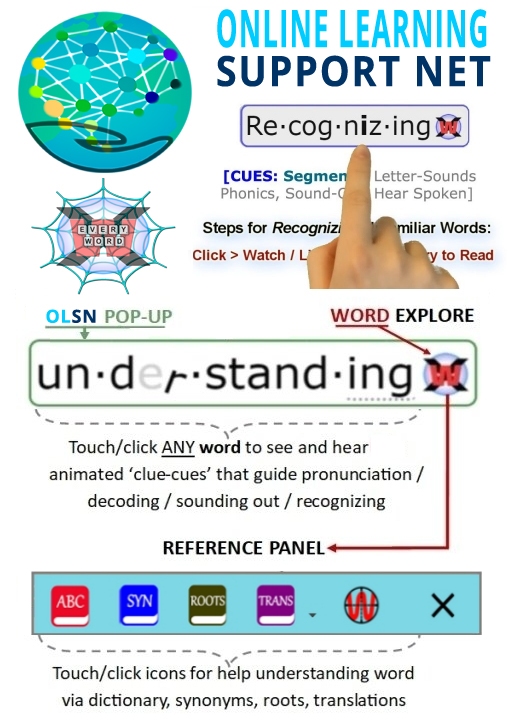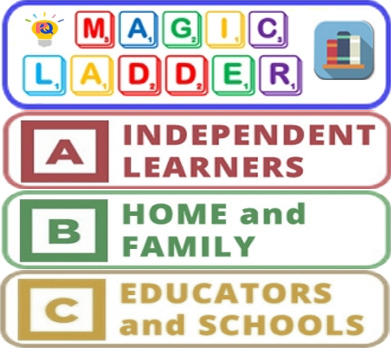Social Pathology
…Every public major concern has a much higher incidence of reading problems attached to it from juvenile delinquency to teen pregnancy to failure to graduate from high school to drug problems. You take anything that we say is a major concern and there is a higher than expected incidence, by far, of individuals who have struggled with reading or have a frank learning disability. Dr. Paula Tallal. Board of Governor’s Chair of Neuroscience and Co-Director of the Center for Molecular and Behavioral Neuroscience at Rutgers University. Source: COTC Interview – http://www.childrenofthecode.org/interviews/tallal.htm#MostofOurChildrenAreLearningtoFel
Note: Remember to click on any word on this page to experience the next evolutionary step in technology supported reading.
Low Literacy Skills and Social Pathologies
I think the main thing to emphasize for anyone who has worked with a child or with an adult who has a reading problem, either who is low literate or is just struggling with reading, is that it is very apparent that it is the lost human potential, the lost self-esteem…that is the most poignant. And, in the end it’s the most significant, because the loss in self-esteem is what leads to a whole host of social pathologies that are very difficult to look in the face. Crime, substance abuse, and the school drop out rate -any of those things – they are very difficult to face. And there is a line to be drawn between low literacy skills and those social pathologies.
There is a twenty-seven percent drop out rate of students with learning disabilities; that is more than twice the rate of the general population …lost human potential. And there are problems with substance abuse and juvenile justice problems. And certainly looking at the general population of students that drop out, one can go to prisons and see that it is very apparent the majority of inmates lack reading skill.
James Wendorf, Executive Director, National Center for Learning Disabilities. Source: COTC Interview – http://www.childrenofthecode.org/interviews/wendorf.htm#TheRealCostisLostSelfEsteem
Higher Than Expected Incidence of Struggling Readers and Learning Disabilities
The statistics on the negative sequalea of failing to read are horrifying. And we continue to think about this as a small problem. It’s not life threatening, that’s for sure, but it can be life destroying for a lot of individuals and we tend to forget that.
It’s remarkable that’s there’s no insurance coverage for most of the families who have children with these problems. There are very few physicians who are more than just aware of the problem. There are very few individuals who specialize in this problem. Many parents have said to me, ‘If I had a child with any other problem I would have some high level professional with a medical degree to take this child to to deal with the problem. But if my child has an educational problem I’m on my own with the teacher’ – who are very well meaning, but many times don’t really know what to do with the children who have a lot of difficulty in this area.
At the same time, we know remarkably well that if you know a child’s reading ability by the third grade you generally have a very good ability to predict whether they’re going to graduate from high school or not and what their abilities are going to be and what their future is going to be. That’s the reason we hear all children will read by the third grade, we know that’s highly predictive.
What are the rest of the statistics? I don’t know if you want to hear the horror statistics, but it’s quite remarkable. I had the opportunity to give a report to the Congressional Bio-Medical Research Caucus so I went into looking at the statistics. It’s something like every public major concern has a much higher incidence of reading problems attached to it from juvenile delinquency to teen pregnancy to failure to graduate from high school to drug problems. You take anything that we say is a major concern and there is a higher than expected incidence, by far, of individuals who have struggled with reading or have a frank learning disability.
It costs twice as much in real dollars to educate a child in special education than in regular education and yet through the history of maintaining statistics and all the additional money that has gone in we have seen a flat line in terms of the actual effectiveness of our current ability to remediate these issues. And yet we know that all these other problems are on the rise as we have more and more children who are having difficulty in learning to read. We do have a national crisis, well probably an international crisis, but we do have a major crisis in the United States.
Paula Tallal. Board of Governor’s Chair of Neuroscience and Co-Director of the Center for Molecular and Behavioral Neuroscience at Rutgers University. Source: COTC Interview – http://www.childrenofthecode.org/interviews/tallal.htm#MostofOurChildrenAreLearningtoFel
Literacy and Social Pathology
David Boulton: This plays right into the National Institute for Literacy’s upcoming report on the state of adult literacy and the strong correlations between the patterns that we see at the NAEP level and how they seem to play out in adult society. That high percentages of inmates in prison are people of color and people that can’t read, and similarly in welfare and health care. There’s such a strong correlation between literacy and all these other social pathologies.
Dr. Timothy Shanahan: How aware you are of what’s going on in your society is correlated with it. How often you vote, whether you’re registered to vote – that’s connecting to literacy. Whether you’re working, what level job you’re working in, your likelihood of getting employed – all those are connected. Not all low literacy people commit crime, but it does appear that the largest percentage of people who commit crime are of low literacy. Every social pathology appears to be related to literacy attainment. Every good that we distribute in our society seems to be related to it. Literacy is a great enabler.
Let’s be honest – a child who comes out of an impoverished background in terms of what his mother or father can provide materially – if that kid does well in learning literacy he is much more likely to live at a higher standard than his parents, he is much more likely to be able to participate in any number of social activities that his or her parents can’t participate in. But the deck is stacked against that kind of a child, and the statistics suggest that he or she will probably end up more like their parents in literacy attainment (and the outcomes that can buy).
Timothy Shanahan, Past-President (2006) International Reading Association; Member, National Reading Panel; Chair, National Reading Panel; Professor and Director, University of Illinois at Chicago Center for Literacy. Source: COTC Interview – http://www.childrenofthecode.org/interviews/shanahan.htm#LiteracySocialPathology













